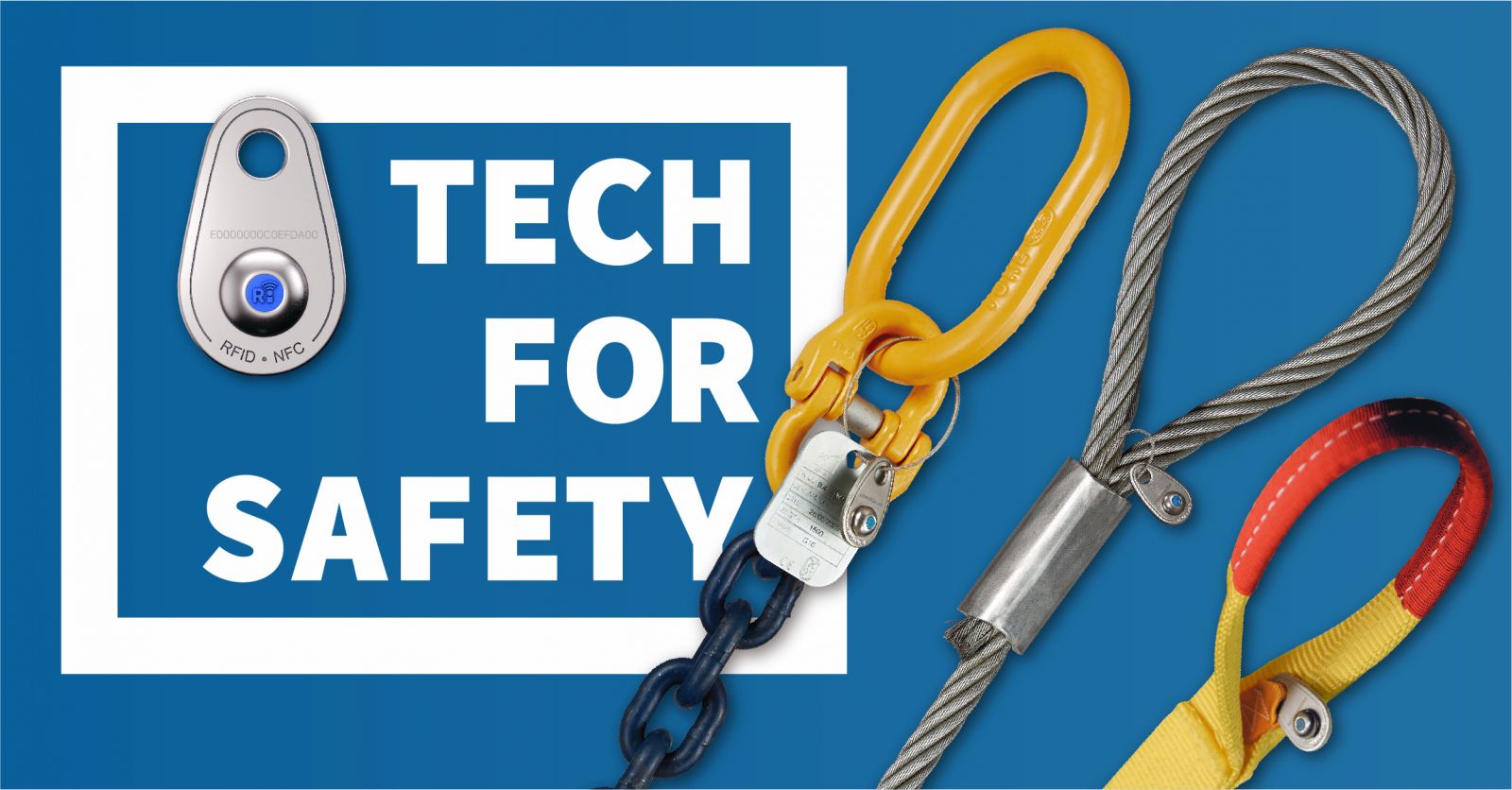Economy & Business
YOKE's digital transformation experience
How a company producing industrial lifting safety hooks developed key strengths in protecting people’s safety by establishing a new business through digital transformation
Courtesy of PwC
I. Organization background
Founded in 1985, YOKE Industrial Corp. has grown into a company with 450 staff. Engaging in traditional metal processing industry, the company placed its focus on two production lines: 8 Series industrial lifting accessories and N Series fall protection equipment. The company’s products are mainly used in 7 fields, which include: offshore wharfs, construction engineering, logistics handling, mining engineering, mold lifting, wind power generation, maintenance and repair.
Headquartered in Taiwan, the company gradually established its subsidiaries worldwide. With more than 100 distributors all over the world, the company’s products are currently sold in over 45 countries. YOKE’s industrial lifting hooks have been ranked among the world’s top 3 with the fall protection equipment occupying 65% of the global market.

Fig.1: Steven Hong, Chairman of YOKE
II. Impetus for digital transformation
YOKE faced a number of challenges. First, the maturity of traditional manufacturing along with its harsh work environment makes it difficult to attract talent, leading to a labor shortage.
Second, the high dependence on the experience inherited from seasoned technicians without sufficient successors made it hard to promote digitalization. Additionally, the absence of standardized processes and data due to the use of manual records made it difficult to digitalize.
Third, the increasing diversification of product lines for about 4,000 products and mixed production made management highly complicated. Production lines needed to be changed frequently for mixed production to cope with the complicated manufacturing processes for diversified products, which increased the difficulty of management.
Finally, the reliability and traceability of pre-use checks is vital for maintaining product safety. Since product safety is regarded as the top priority, each country has stipulated various regulations regarding compliance and document preservation. It is typical to preserve hard copy records for 10 years, which took up a large amount of space and made it difficult to preserve and conduct queries.
III. Digital transformation strategies
Three factors were crucial in YOKE’s digital transformation strategy. First, YOKE took a gradual approach, beginning with standardization, moving on to semi-automation and eventually to fully intelligent technologies. The company started by standardizing processes and systems and adopted simple data tools such as Excel to digitalize repetitive operations. Only when the processes were gradually implemented and running smoothly, with data and records all well-preserved and executed, did YOKE begin considering how to introduce automated or smart systems to further improve operational efficiency.
Second, two complimentary forces are required to achieve a successful digital transformation: On the one hand, an enterprise must lead from the top down to quickly scale up the digitalization through large-scale projects. On the other hand, employees are required to constantly come up with new ideas to continuously improve current systems from the bottom up. To decrease the acceptance of digitalization, YOKE set up a mechanism for employees to participates in project activities, aiming to create a digitally friendly environment for developing innovation and experience sharing among staff.
Third, YOKE not only pursued internal operational excellence through digital transformation, but also observed customers’ pain points to achieve regulatory compliance to develop new business model. YOKE prioritized customer experience, focused on their demands for regulatory compliance to help them avoid heavy fines or prison sentences, and developed products that comply with international standards. Since then, the company has expanded its products and services ecosystem.
IV. Implementation approaches
1. Digital automation to improve production and operational efficiency
In implementing its digitalization strategy, YOKE first standardized and integrated information flows to create a digital operation platform. YOKE introduced Enterprise Resource Planning (ERP) to manage its production and operation activities. After more than a decade, YOKE decided to upgrade its ERP into a cloud-based system, considering that the cloud could provide it with a more efficient collaboration platform. Before the cloud system was launched, the company re-examined more than 700 process activities to ensure process rationalization, optimization, and standardization.
Second, given the high demand for customized products and the increasing complexity of product line management, YOKE wanted to integrate information flows and improve operational efficiency. The core ERP system was interconnected other platforms for production, R&D, manufacturing, purchasing, and customer relationship management. The current focus is on improving YOKE’s digital platforms and establishing respective databases for each platform, aiming to build a data warehouse to integrate all the data and create an integrated digital operation center in the future.
In addition, YOKE’s digital transformation is not only taking place within the company, but also collaborating with its supply chain manufacturers to facilitate resource integration. The company introduced a supplier portal in 2021, enabling suppliers to execute orders on the platform. To date, the number of online suppliers using the platform has reached 95% of the total.
In consideration of the small scale of some suppliers, the platform helps suppliers bear part of the business management needs. The relationship between YOKE and suppliers has become closer thanks to information sharing. At the same time, it allows suppliers to experience the benefits of digital platforms and recognize the advantages of digitalization, which integrate the suppliers into YOKE’s smart ecosystem.
Third, YOKE is also promoting automation and intelligent technologies on its factory sites. To cope with manpower shortages, YOKE implements shop floor management through process automation in factories, such as robot arms and automatic warehousing systems, aiming to invest manpower in activities with more productive value. In addition, the company collects data in the factories through IoT to integrate data flows and applies artificial intelligence (AI) to data processes, thereby contributing to improving the quality and efficiency of the data-driven decision-making.
Overall, introducing automation and intelligent technologies has reduced labor demand by 8.8% and shortened the knowledge gap, so that the production lines can be managed by young workers with an average age of 37.
2. YOKE empowers a bottom-up style to create a digital innovation development culture
To successfully achieve digital transformation, a collaborative effort both from the top down and an employee-led effort from the bottom up is needed to drive continuous innovation.
However, according to 2021 Taiwan SME Digital Transformation Survey released by PwC Taiwan, about 30% Taiwanese Small- and Medium-sized Enterprises (SMEs) identify “cultural resistance to change in their organizations” is the biggest challenge in digital transformation. However, YOKE is an exception. Steven Hong, Chairman of YOKE, said confidently that:
“Many people mistakenly believe that digital transformation or the use of digital tools will cause a lot of internal resistance, which is no longer the case. Now it’s the other way around: people are eager to use technology in the workplace and in their lives.”
YOKE has been committed to promoting Total Productive Management (TPM) and the Continuous Improvement Team (CIT) activities to constantly strengthen the corporate system and increase the competitiveness of the company with ever-improving mechanisms.
YOKE’s all-staff proposal for improvement sets a goal of a 100% participation rate, requiring every staff member to make an improvement proposal regarding their work every month. This is an iterative way to facilitate digital transformation. Stimulated by the spirit of continuous improvement, employees are used to brainstorming how to apply digital tools to keep upgrading.

Fig. 2: Introduction to YOKE’s digital transformation: Iterative evolution
There are also cross-departmental proposal contests in which the best team receives accolades. Good proposals will be shared among departments as successful cases. Such cross-departmental learning and sharing broadens the horizons of staff and advances the goal of digital empowerment. From 2021 to 2022, the annual number of improvement proposals reached 87, of which 55 were launched and completed, resulting in savings of approximately NT$14.58 million.

Fig. 3: Presentation of CIT and TPM projects
3. Identifying customers’ pain points and establishing new digital business models
YOKE transformed its information records from paper-based storage to a cloud-based system by using Radio Frequency Identification (RFID) digital chip to enhance information safety. Back in 2017, when YOKE went to visit customers in Europe, it found that they all spontaneously raised concerns about regulatory compliance.
With customers’ pain points in mind, YOKE created SupraTag embedded with RFID chips and attached them to products. In this way, the field staff could connect to the cloud management platform by using the RiConnect APP developed by YOKE’s partner Ri Connect, Inc. to scan the digital chip with their mobile device or readers, follow the instructions to complete the pre-use check, and check the detailed status of the assets.
In this way, YOKE was able to meet the application needs of customers’ daily pre-use check and asset management, enable all information to be read and remotely accessed on a single platform, thereby creating a triple-win situation for manufacturers, asset owners, and field staff.
At present, YOKE’s RFID SupraTag technology has been granted seven patents, and digital services had been introduced into about 950 products by 2021. More than 100 companies have joined the ecosystem of digitalized safety, 90 of which were the company’s partners and customers.

Fig. 4: RFID SupraTag. Source: YOKE
On the other hand, YOKE, as a product manufacturer, has seized the opportunity to join the digital platform economy, extending services and creating new business models.
First, the hardware and software of RFID SupraTag is a set of newly profitable products. Second, in terms of data application, the big data collected by SupraTag and analyzed by the RiConnect platform can be used as a basis for product development and improvement. Finally, YOKE has designed occupational safety training and education courses, enabling the company to operate different business models, organize different revenue structures, and create new business opportunities.
V. Critical success factors
YOKE has three critical success factors. The first is a leadership team that embraced a digital mindset and digital transformation. YOKE’s experience shows that companies need management talent to establish a digital mindset, so as enable them to find new value through digital innovation.
Second, YOKE is open-minded with regards to emerging digital technology. It places more emphasis on thinking about how to apply new technologies to enterprises, which enabled the company to become a pioneer in initiating new digital projects and introduce the latest systems and technologies.
Finally, by creating a culture of continuous improvement within the enterprise through its project activities, YOKE enables employees to have the flexibility to try new things and have confidence in the practice of digital transformation. As Tom Lin, CEO of YOKE, said in an interview:
“The problem I have now is the company has formed a culture where they (employees) chase after me to strive for new IT application systems. It was not me to propose whether we should introduce the systems. It was they who came up with digital solutions to problems.”
VI. Lessons learned
YOKE’s digital transformation illustrates how even an SME can make good use of technology to solve challenges as long as it has the perseverance to establish a bottom-up culture for continuous improvement to provide the driving force for transformation. In YOKE’s case, it standardized integration of information flows, developed a digital operation platform to improve the quality of operations and decision-making, as well as promoted automated and smart applications in factories. These strategies not only alleviated labor shortages, but also replaced the seasoned technicians’ experience with technologies; thus, ensuring consistent product quality.
On the other hand, YOKE can be regarded as a model case of identifying a potential service opportunity in pursuing digital innovation and being sensitive to customers’ pain points. All of these advantages have enabled the company to explore a new niche market.
YOKE’s case shows that it is not the choice of digital tools that is the primary concern in the digital transformation process, but rather the enterprise’s absolute determination to push itself to become a high-tech enterprise. By following YOKE’s example, companies can better equip themselves to solve future problems and thereby continue to grow and thrive.